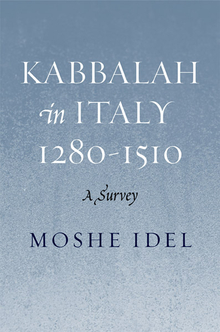Messianic Mystics
WARNING
You are viewing an older version of the Yalebooks website. Please visit out new website with more updated information and a better user experience: https://www.yalebooks.com
Moshe Idel
Exploring the interplay of Jewish messianism and mysticism from the twelfth through the eighteenth centuries, the book looks closely at pivotal figures and movements, including Abraham Abulafia, Sabbatai Sevi, and hasidism. Idel discerns three types of messianism—theosophical-theurgical, ecstatic, and talismanic—and through these demonstrates that Kabbalah, from the very beginning, was messianically oriented. He counters the common belief that messianism typically arises as a response to such calamities as the expulsion of the Jews from Spain in 1492 and shows that messiahs often gain great popularity in times of political tranquility. Idel also finds that Jewish messianic and mystical experience bears a much greater resemblance to Christian messianism than has been recognized before.
"Moshe Idel is one of the most original minds in Judaic studies today. Messiantic Mystics offers a refreshingly novel perspective on a fundamental theme of Jewish thought and historical experience. Idel’s new synthesis will inevitably join his path-breaking Kabbalah: New Perspectives as a major articulation of his historical reconstruction of Judaism."—David Ruderman, University of Pennsylvania
"Moshe Idel is the living scholar who is of the eminence of Gershom Scholem, Henry Corbin, and Hans Jonas in the investigation of Western esoteric religious traditions. Messianic Mystics joins Idel’s Kabbalah: New Perspectives and Hasidism as major works illuminating Jewish mysticism."—Harold Bloom, author of Omens of Millennium and Shakespeare: The Invention of the Human
“Idel’s treatment of a most intriguing subject will stretch nonspecialist readers but richly reward them, and his thorough documentation points our excellent avenues for further exploration.”—Booklist
“This . . . book covers the spectrum of Jewish mystic tradition, from pre-Kabbalistic messianism to some of its modern reverberations. . . . Idel uses clear and popular language; he doesn’t overload the book with technicalities in describing the essence and meaning of the teachings.”—Library Journal
"Though writing at a high academic level, Idel uses clear and popular language; he doesn’t overload the book with technicalities in describing the essence and meaning of the teachings. Highly recommended for both general and specialized collections; suitable for beginners in Jewish studies as well as readers already familiar with Jewish mysticism."—Library Journal
“[In this] arresting new study, Moshe Idel argues that messianism deserves a central place in Jewish intellectual history. More than that, he insists that there are close ties between messianism and the Kabbalah. . . . Idel offers convincing proof that both would-be messiahs and theorists of messianism have generally been mystics as well.”—John Dorfman, Lingua Franca Book Review
"Anyone with a desire to learn more about the ideas and individuals of pre-modern Judaism, will enjoy this challenging commentary."—New Jewish Books, This Month’s Preferred Books-March
"Renowned Hebrew University professor Moshe Idel provides a stimulating and engaging study of the relationship between Jewish messianism and mysticism since the 12th century in Messianic Mystics."—Publishers Weekly
“Idel, utilizing his almost unequalled knowledge not only of ancient and medieval Hebrew texts, but also of Christian, Islamic, and Eastern sources, elucidates new perspectives on the nature and evolution of Jewish messianism. . . . This work, together with his Kabbalah: New Perspectives, will long endure as a sophisticated and nuanced understanding of Judaism.”—Stephen D. Benin, Religious Studies Review
“This . . . book covers the spectrum of Jewish mystic tradition, from pre-Kabbalistic messianism to some of its modern reverberations. . . . Idel uses clear and popular language; he doesn’t overload the book with technicalities in describing the essence and meaning of the teachings.”—The Library Journal
Publication Date: May 11, 2000












